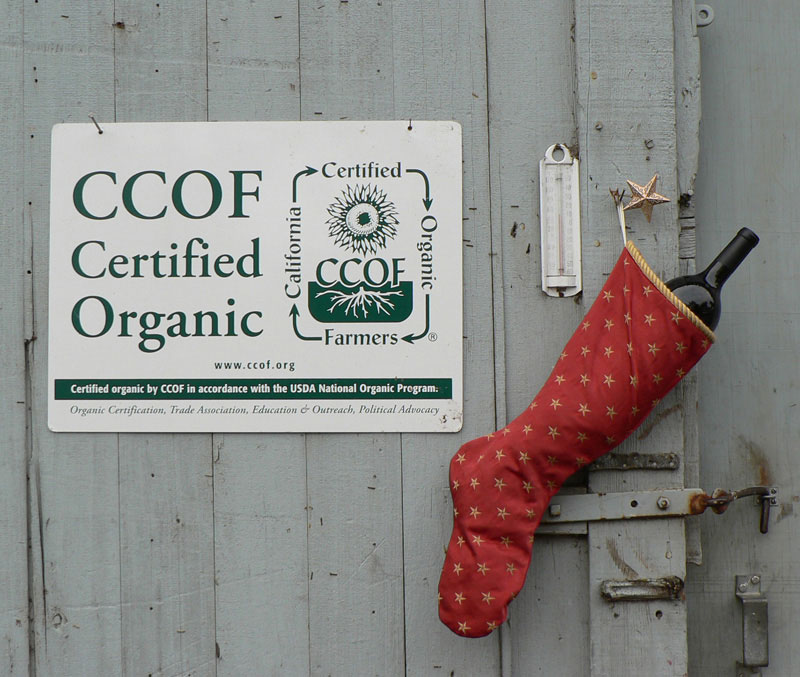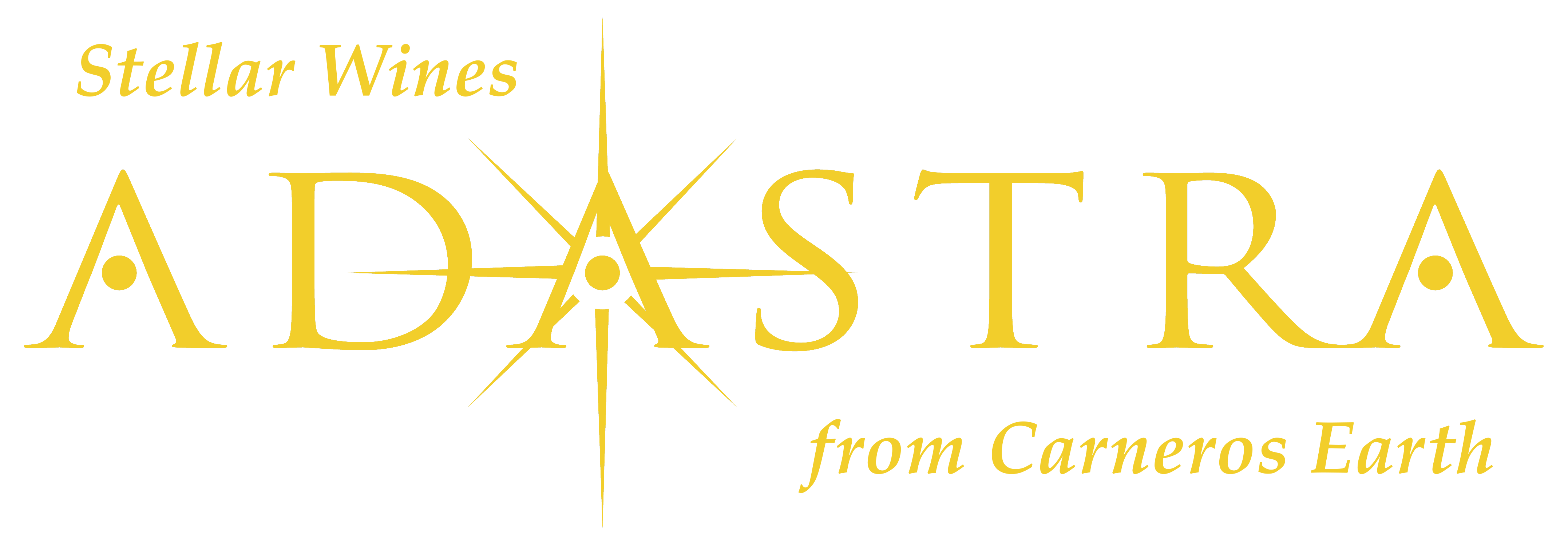Adastra History in Detail
The Early Ranch
In the 1840s as part of the Mexican land grants, Jacob Leese received "Rancho Huichica," 18,000 acres of unfarmed land in the central Carneros.Today the value of Rancho Huichica would comfortably exceed a billion dollars. However, unfortunately for his heirs, Leese sub-divided and sold much of his property early on.
Until parcels of land were acquired by farmers, much of Rancho Huichica was undeveloped. However the wild oats and grasses that grew there naturally were valuable horse fodder. Consequently, teams of workers would traverse the San Pablo Bay by boat, harvest the crop gratis and return with it to San Francisco to sell to the city's horse owners.
In the 1890s a young immigrant couple from Denmark, Paul and Caroline Raven, bought the plot that is now Adastra Vineyards from Leese and began to farm it commercially. The Ravens grew grapes, apples, prunes, hay and grain. Like most farmers in the area, they also kept livestock and poultry to feed themselves and maintained a flourishing vegetable garden. Son Ted Raven continued to farm the land after his parents had died. The Ravens built a very fine barn, which still survives to this day.

The Adastra Barn Built by the Ravens in the late 19th Century
Ted had a reputation as a fine farmer and a good neighbor. He bred admired teams of horses and leased land from others to increase his holdings. He was also among the first in the area to own a tractor.
In 1912, he married Elsie Zweifel, a schoolteacher, who, a year earlier, had come to teach at the local school, conveniently located across the road from the farm.
The Ravens' grapes, probably Zinfandel, were apparently sold to the Sebastiani winery in Sonoma. It is likely they were abandoned at prohibition. Stewart Duhig, who grew up on a nearby farm, wrote in his memoir, Huichica,
"The area was particularly well-suited to grapes, although the yield was not as great per acre as in the deep soil of the main (Napa) valley, and the quality was excellent."
The Sandbachs
When Ted Raven died, the farm was bought by the Sandbachs who bred horses. The Sandbachs named their holding "Star Hill Ranch" because of the starry night skies and, apparently, because high peaks from five counties form a large quinate star around the property. Visible once the fog has lifted, the peaks are Mount St. George in Napa, Mount Veeder in Sonoma (and Napa), Mount Tamalpais in Marin, Mount Diablo in Contra Costa and a nameless peak in Solano County.The Arrival of the Thorpes
In 1980 the Thorpe family moved to Napa so Chris and Naomi could practice medicine in the area. They lived in rented accommodation for over three years whilst searching for the perfect piece of land. Finally, in 1983, they found and purchased 2545 Las Amigas Road which combined seclusion and a good well with relatively straightforward access to the Bay Area's urban attractions.Whilst appreciative of the name "Star Hill Ranch" and impressed by the starry Carneros nights, the Thorpes chose to rename their new domain "Adastra," honoring a phrase and sentiment beloved of Naomi's father: Per aspera, ad astra (through striving, to the stars).
Although bringing a brace of horses with them, Chris, having grown up on a livestock farm in Michigan, wanted to use the ranch primarily for cattle. The arrival of the of five cows and a bull in March 1984 marked the beginning of the Adastra Angus era.
The Adastra Angus Era
The Adastra Angus era was a lot of hard work punctuated with numerous (endlessly repeated) cattle jokes and puns. All cattle were named after constellations and registered with the American Angus Association.Unfortunately, on twenty acres of land, cattle raising was barely a break-even proposition financially. More frustrating was the cattle's headstrong pursuit of their own "the grass is always greener on the other side of the fence" philosophy. Neighboring properties were the frequent target of nocturnal bovine grazing raids. As a vascular surgeon, Chris was frequently on night call at the hospital. Retrieving errant cattle on his nights off became an increasingly unattractive proposition. He began to investigate other options.
Looking for an alternative agricultural use for the land, Chris began to take night classes in viticulture at the Napa Valley College. The remarks of others, and Chris's own research, suggested that Adastra, with its poor soils and gently undulating, north eastward sloping aspect, was a potentially great vineyard site. When a neighbor began ripping his land and explained to Chris if he did the same thing at that time, Adastra would avoid the cost of move-in fees for the heavy equipment, the deal was done.
In 1989, the Thorpes sold the cattle and started to prepare eight acres of land for vines (less mobile, less truculent, potentially more profitable). The rootstock was planted in fall of 1989 and grafted to Merlot and Chardonnay in spring of 1990. The Adastra Vineyards era had begun.
The Adastra Vineyards Era
In the early years, Chris did most of the work himself, occasionally referring to a consultant and working in dusting and irrigation/cultural practices around surgery schedules. Later though, he enlisted the services of a vineyard management company. In 1993 he began to sell grapes to the Robert Mondavi Winery, a relationship which continued until the millennium.
Chris driving the Ford Tractor
Emboldened by the favorable performance of the vineyard and heartened by the sedentary nature of vines versus cattle, Chris began to form a vision of producing complex, estate grown Adastra wines.
In 1993 he traveled to the vineyards of Burgundy to research Pinot Noir and Chardonnay production. In 1994 he planted rootstock on an additional twelve acres at Adastra, while continuing the search for appropriate grape material.
Assisted by son-in-law-to-be Edwin Richards, the quest for clones included additional field visits, numerous telephone conversations and visits to various libraries. It ranged across three continents from France to California, Washington, Oregon and to Australia.
As a result, the twelve acres were grafted to twelve different clonal selections, combining the best of New and Old World viticulture: "California Heritage" scions, like Swan and Old Wente, as well as some of the "Dijon" clones 76, 96, 113 and 115. At this time, very few growers in California had the now much-praised Dijon clones.
In 1995, Edwin became general manager at Adastra. He augmented his training from the Institute of Wine and Spirits in London with viticulture and enology classes at Napa Valley College and UC Davis and took business classes at UC Berkeley.
The guiding phrase Per aspera, ad astra means that the pervasive spirit at Adastra is one of continuous improvement.
In 1996, in order to gauge the vines' progress, a system of tags was created and installed in the vineyard, effectively numbering each vine. This has enabled monitoring of individual vines and helped Adastra accumulate meaningful, statistically-based viticultural data, the idea being that the more one knows about one's vines, the better one is able to grow grapes to produce ever more perfect wines.
Also in 1996, Adastra signed a long-term contract to sell its Pinot Noir grapes to Etude Wines, one of the pre-eminent Pinot producers in the United States. Etude's interest in Adastra is a testament to the vineyard and the growers.
Adastra's pursuit of quality in the vineyard took another leap forward with the arrival of Pam Starr as winegrowing consultant in 1997. Among her many attributes, Pam brought an understanding of how viticultural practices can affect a wine's flavor. Her commitment to making wines that reflect a sense of place blended well with Adastra's desire to thoroughly know its property and to create complex, estate-grown wines.
In 2000, one clonal selection, Espiguette, was replaced by grafting additional Old Wente and additionally, a half-acre of Chardonnay clone 95 was introduced on an experimental basis.
In 2003, Merlot clones 1 and 8 were grafted over to Syrah 470 and additional Pinot Noir. In 2007 we budded over some more Merlot to accommodate some exciting Pinot Noir budwood known as "Calera" and "DRC" respectively. We also slightly increased our acreage of the Pinot Noir clones Dijon 115 and 777.
These steps entailed no little expense but are indicative of Adastra's uncompromising commitment to quality. Better, more flavorful grapes should produce better, more intense wines.
Since mid-1998 Adastra has used no herbicides in its vineyards. In 2002 Adastra began to farm completely organically, in the belief that this would produce better quality grapes and have a positive environmental impact. In 2005 we received certification from the California Certified Organic Farmers (CCOF). Our CCOF certification has been ongoing since then. We are also certified by Fish Friendly Farming.

Chris mows tall grass
In 2015, we removed the eight-acre AI Vineyard due to diminishing yields, leaving 12 acres, under vine. In early 2021, an additional four acres were removed for the same reason, putting the vineyard area at eight acres. Just under half the vines are Pinot Noir, with Chardonnay, Syrah and Merlot making up the remainder.

CCOF Sign and Stocking
